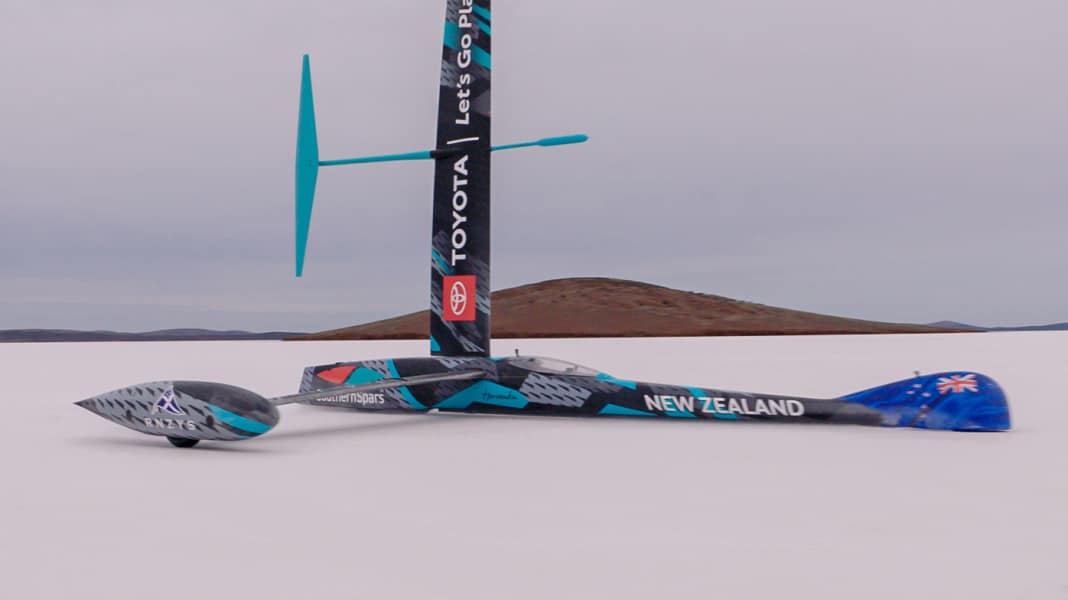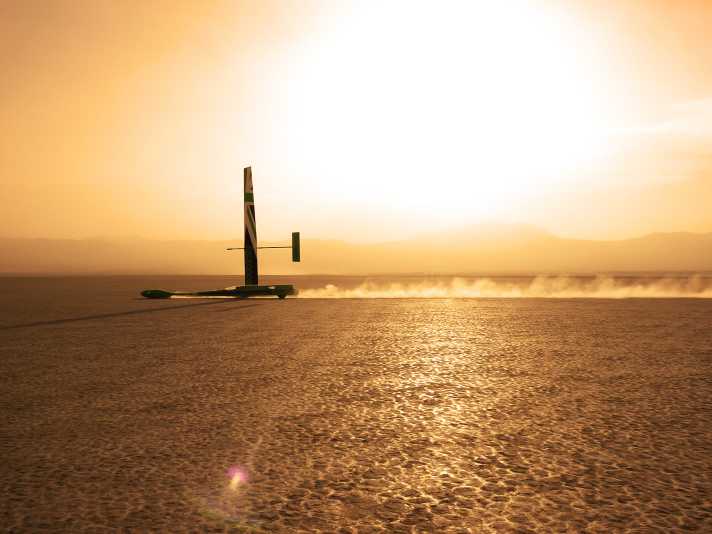
The New Zealand team has been working on a record attempt off the water since the last America's Cup. In order to break the world land speed record under sail, a team was formed around multiple America's Cup winner Glenn Ashby. The result is "Horonuku", a 14.2 metre long vehicle with three wheels and a wingsail. The first tests on the Australian salt lake, Lake Gairdner, produced initial successes with speeds of over 150 km/h, but this is not yet enough to break the record.
The land yacht weighs around 2.8 tonnes and is therefore around four and a half times heavier than the record holder "Greenbird". However, unlike on the water, this is just as planned, explains design manager Sean Regan: "Weight will be our friend if it is used in the right place. So we can refine our design techniques to allow for extra weight in certain areas and not focus so much on weight savings."

Tyres instead of foils
The current record is 202.9 km/h, 156 km/h is the team's best performance to date. The obvious biggest difficulties for the sailing team are the tyre technology and the dynamic forces associated with the tyres on the ground. They represent the decisive difference for the designers in contrast to the hydrodynamic forces on the foils in the water.
"Tyres on a flat salt surface travelling at over 200 km/h are very different to foils in the water at over 50 knots," says engineer Tim Meldrum. Pilot Ashby also emphasises that the choice of tyres has a significant influence on the land yacht. However, the fact that they have not yet got closer to the record is also due to the conditions: "There's a lot more in the tank, we just need a bit more wind."
Previous world record has stood for over ten years
The racing machine of British engineer Richard Jenkins, who has held the record since 2009, also looked similar to Team New Zealand's "Horonuku". According to his own statement, the project took him over ten years. During this time, he developed a total of five high-tech beach gliders and tested them at various locations. In the end, he managed to sail at a speed of 202.9 km/h on Ivanpah Lake, a dry desert lake.

The rules stipulate a natural surface for the record, so a tarmac race track is out of the question. As a result, Team New Zealand has chosen the dried-out Australian salt lake Lake Gairdner and is currently continuing development there. This is particularly suitable due to the extraordinary hardness of the surface; in some places the salt is over a metre thick.
Design award for Team New Zealand
In addition to this project, Emirates Team New Zealand is working intensively on the next America's Cup. The team has also designed a hydrogen-powered and foiling support boat as well as the one-design AC 40 class for the Women's and Youth America's Cup. The New Zealanders have now been honoured with a design award for their long-term work. Led by Head of Design Dan Bernasconi, part of the design team had the honour of accepting the award from the Designers Institute of New Zealand on stage.
This could also be of interest to you:
